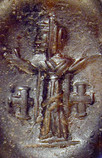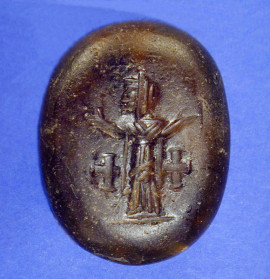The Anglo-Saxon Laboratory
The Anglo-Saxon Laboratory is a service for archaeologists who excavate sites of the 5th to 11th centuries.
We provide advice on all aspects of Anglo-Saxon, Anglo-Scandinavian and Merovingian archaeology and have particular skills in post-excavation analysis, research and publication.
We tailor the work to fit the needs of the client. In most cases this means collaboration with the site director and staff, but we also have the capacity to manage the whole post-excavation process. We can:
* put together a team of experienced archaeological consultants, including
artefact researchers, conservators, IT specialists and illustrators
* guide the project through grant applications
* analyse the evidence and place it in the context of current archaeological and historical research, including theoretical studies concerning gender, social relations, trade and status
* take the material through to publication in website and/or book form.
Archaeologists also approach us for:
* reports on individual artefacts
* catalogues and reports on collections of finds
* statistical analysis of finds
* advice on chronology
* analysis of burial ritual
* editing of texts
Through our international work on textiles (Textile Research), we have an extensive network of contacts both inside and outside Britain. We are therefore able to provide reports on foreign artefacts excavated in Britain and we also act as a portal through which archaeologists outside Britain can gain access to British expertise.
University contracts
We provide supervision and advice for post-graduate students at a number of universities. This allows the students to experience work within the profession and
keeps us abreast of new developments. Penelope's areas of specialism are the interpretation of women in the archaeological record, their craft skills, beliefs, appearance, social status and
presence/absence in migrations; and the use of scientific techniques in the service of archaeological research.
Contact pwr@aslab.co.uk
A glass intaglio from a pendant necklace in a 7th-century grave at Saltwood, Kent. Any pendant necklace is an indicator of wealth and/or status, but this intaglio has particularly significant imagery. It was probably carved in Constantinople in the late 5th or early 6th century and it depicts a woman, almost certainly the Virgin Mary, with arms raised in prayer (orans) and flanked by crosses. It is one of the earliest Anglo-Saxon symbols of Christianity.
Photo courtesy of Oxford-Wessex Archaeology Joint Venture and CTRL (UK) Ltd




